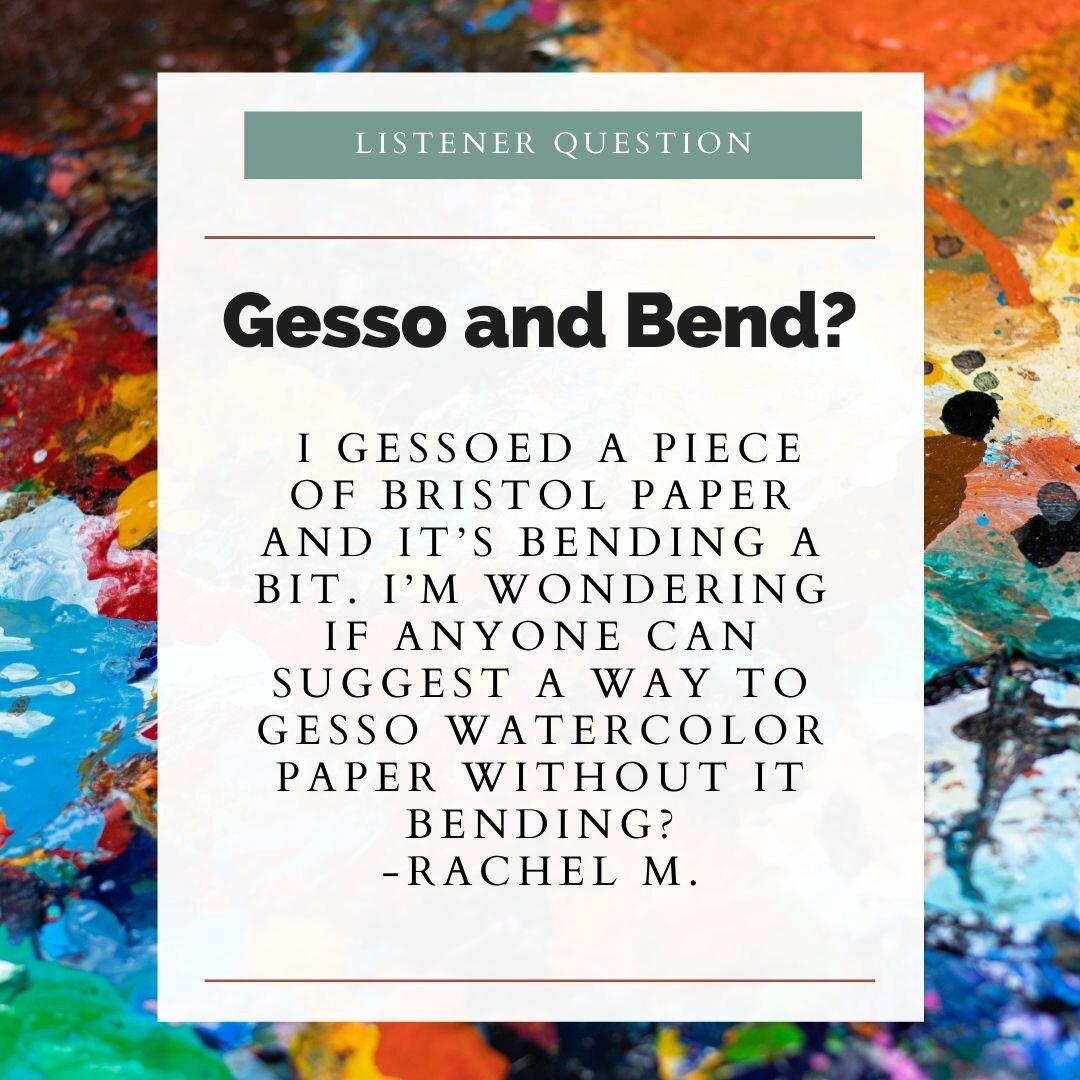How to Keep Gessoed Watercolor Paper from Bending
Rachel M. wrote in with a question about gesso. I asked the newsletter community and your answers were incredible. (You can sign up for the newsletter here.)
ADD SOME WEIGHT
“Use a heavier weight paper, 140 lb. weight cold press watercolour paper won’t bend,” says Victoria Scudamore, “300 lb. is even better.”
Mark Mehaffey agreed.
“I paint on gesso on watercolor paper often. I love both the texture and the lift ability of that surface,” says Mehaffey (who has some additional tricks coming in the next section), “However with 140lb paper there will always be a bit of a curl or slight roll. Try 300lb paper instead,” says Mehaffey.
ATTEND TO BOTH SIDES
Linda Gardiner, Di Tarrant, and Mehaffey all pointed out that painting both sides can help a lot.
“When you paint just one side the fibers soak up the medium and it bends.” says Gardiner. “When you paint both sides the change is even.”
Tarrant adds,”Gesso both sides to equalise the moisture as it dries. It will dry flatter and a little pressure will flatten the whole surface.”
TAPE!
Another solution to bending, gessoed watercolor paper? Tape it down before you gesso it.
“I work with lots of gesso,” says Cynthia S., “and when I leave the paper attached to the pad and use that blue painter's tape all the way around or secure a single sheet to a piece of plywood and tape it all the way around....I have no problems with weird things happening to the paper.”
Cynthia adds that she leaves it taped until she’s totally finished with the piece and then lets it sit for a couple of days before removing it from the taped pad or board.
“As a last resort, when dry,” she says, “I place it under heavy books.”
EXPERIMENT
Another consideration beyond curling is cracking.
“If you use regular gesso on watercolor paper, the paper will curl and possibly the gesso will crack,” says Vickie Jolissaint. “You may be able to use a clear gel gesso which is more giving and dries less rigid. Cut a bunch of watercolor paper squares and try different gesso to see which ones give you the best results.”
Thank you to everyone who wrote in with responses! You’re amazing.
Get ideas to help you learn to paint (plus new podcast episodes when available!) Add your name to the newsletter below.

